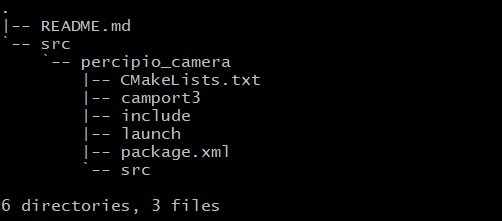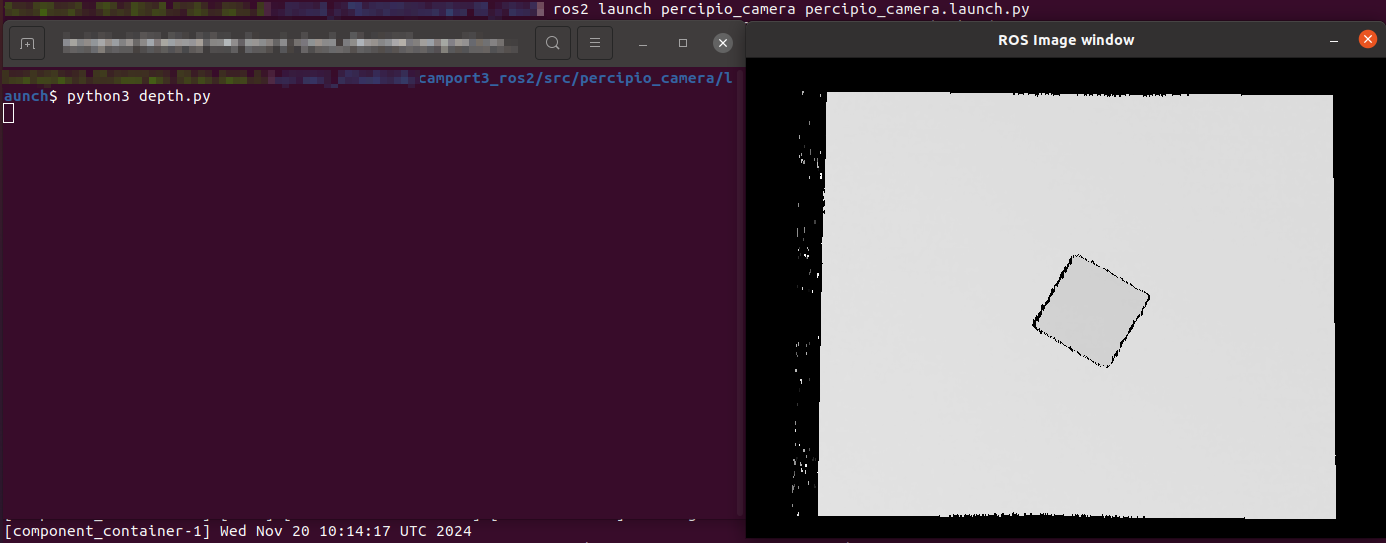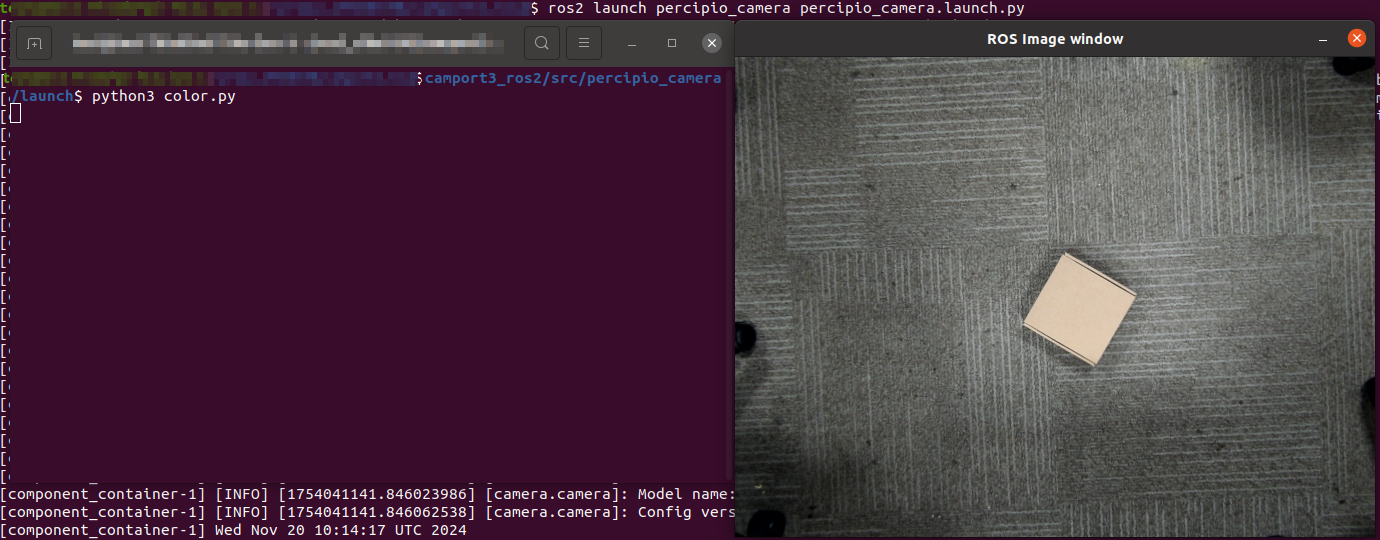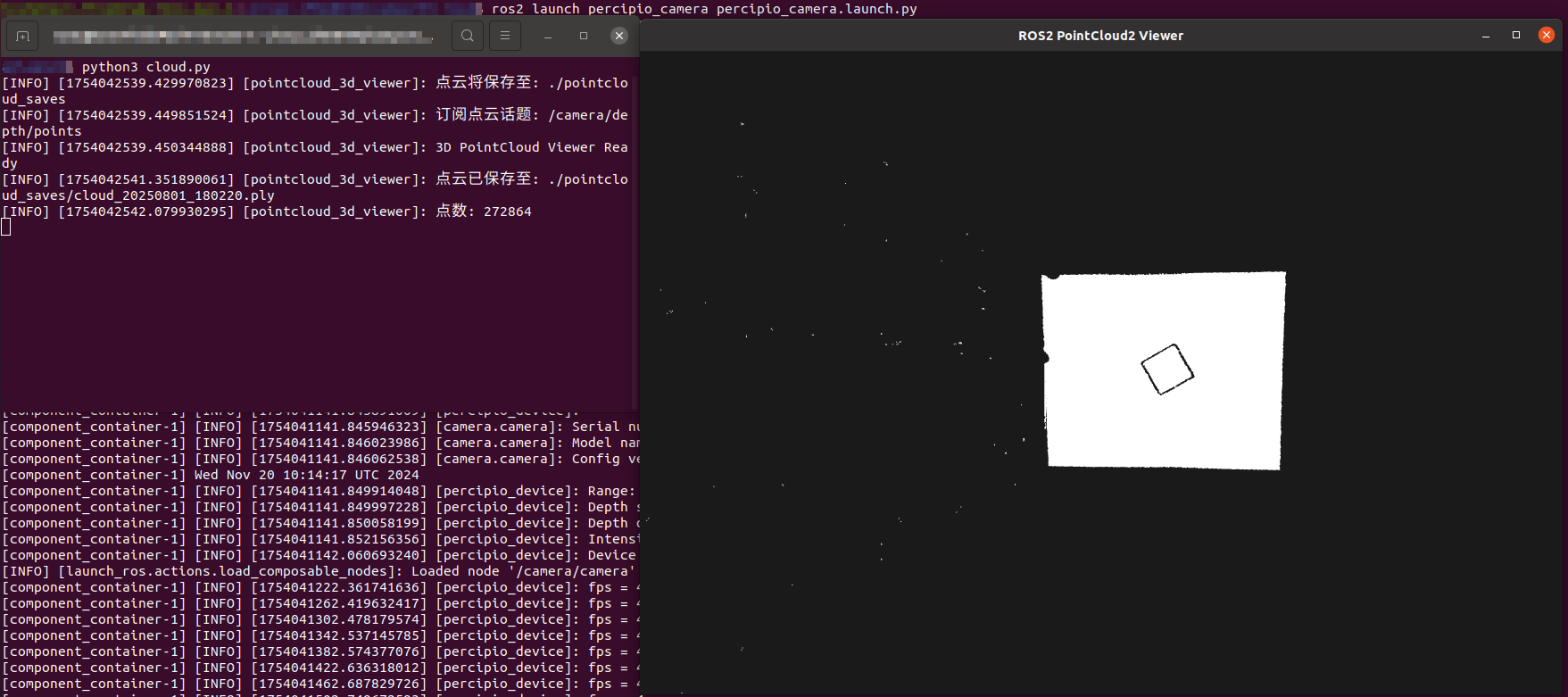ROS 2 Platform
ROS 2 (Robot Operating System 2) is the second-generation version of the Robot Operating System. It is an open-source robotics software framework designed to provide tools and libraries to simplify the creation and management of robotic applications. Developed and maintained by Open Robotics, ROS 2 inherits many advantages of ROS 2 while improving its architecture and features to meet the needs of modern robotic systems.
Set up Development Environment
Install the corresponding ROS 2 development platform based on the Ubuntu version.
Ubuntu20.04: ROS 2 Foxy
Ubuntu22.04: ROS 2 Humble
Install dependencies.
sudo apt install python3-colcon-common-extensions sudo apt install ros-foxy-camera-info-manager sudo apt install ros-foxy-image-publisher sudo apt install ros-foxy-diagnostic-updater
sudo apt install python3-colcon-common-extensions sudo apt install ros-humble-camera-info-manager sudo apt install ros-humble-image-publisher sudo apt install ros-humble-diagnostic-updater
Download Camport ROS 2 SDK
Create a workspace directory:
mkdir -p ~/ros2_ws/src cd ~/ros2_ws/src/
Choose any of the following methods to download Camport ROS 2 SDK:
Access https://gitee.com/percipioxyz/camport_ros2 using a browser and download the Camport ROS 2 SDK.
Use the git command to obtain a local copy: Open the terminal, switch to the working directory where the SDK should be stored, and enter the
git clonecommand to clone the remote repository.git clone https://gitee.com/percipioxyz/camport_ros2.git
The directory structure of Camport ROS 2 SDK is as follows:

Camport ROS 2 SDK Directory
README.md: Briefly describes the ROS 2 compilation process.src/percipio_camera/CMakeLists.txt: CMake build system configuration file.src/percipio_camera/camport3: Contains library files and header files for the Percipio SDK.src/percipio_camera/include: Contains header files.src/percipio_camera/launch: Contains ROS 2 launch files for initializing nodes and setting parameters.src/percipio_camera/package.xml: Describes the package manifest, including the name, version, author information, license, and build dependencies.src/percipio_camera/src: Contains main source code files, including node implementations and camera drivers.
Configure Environment Variables
source /opt/ros/foxy/setup.bash
echo "source /opt/ros/foxy/setup.bash" >> ~/.bashrc
source /opt/ros/humble/setup.bash
echo "source /opt/ros/humble/setup.bash" >> ~/.bashrc
Build the Project
cd ~/ros2_ws/src/camport_ros2/
colcon build --event-handlers console_direct+ --cmake-args -DCMAKE_BUILD_TYPE=Release
sudo echo "source ./install/setup.bash" >> ~/.bashrc
source ~/.bashrc
Tip
- colcon build Instructions:
–event-handlers console_direct+: This option sets the event handler, where console_direct+ ensures that detailed build event information is streamed directly to the console. This provides a clear, real-time view of each build step and any potential errors, enhancing troubleshooting and process transparency.
–cmake-args -DCMAKE_BUILD_TYPE=Release: This option passes additional CMake parameters. In this case, -DCMAKE_BUILD_TYPE=Release sets the CMake build type to Release. This means that the build will be optimized and suitable for a release version rather than a debug version.
After compilation, the following folders are generated.
build: Contains intermediate and object files.install: Includes executables, libraries, headers, and other resources.log:Contains logs generated during build and runtime.
Modify Camera Parameter Configuration
ROS 2 supports two parameter modification methods.
Method 1
Configure parameters directly in the launch file ( percipio_camera.launch.py / multi_cam.launch.py). This method only supports parameters available in the launch file.
The steps are as follows:
Navigate to the path:
camport3_ros2/install/percipio_camera/share/percipio_camera/launch.Modify parameter configurations.
For single-camera setups, open the
percipio_camera.launch.pyfile and modify parameter configurations as needed. The description of configurable parameters is shown in the table below.Specify the camera serial number
DeclareLaunchArgument('serial_number', default_value='"207000106930"'),
Specify the camera IP address
DeclareLaunchArgument('device_ip', default_value='192.168.120.112'),
Note
If neither SN nor IP is specified, the first detected camera is opened by default.
If using multiple cameras, open the
multi_cam.launch.pyfile and modify the parameter configurations as needed. Descriptions of the configurable parameters are provided in the table below.The
multi_cam.launch.pyfile is by default configured for two cameras. If more cameras need to be configured, please add launch x (where x = 3, 4, …, n) by following the format of launch 1 and launch 2.
Note
Description of Configurable Values for xxx_qos:
SYSTEM_DEFAULT: Uses the system’s default QoS settings, which are typically defined by the underlying DDS (Data Distribution Service) implementation. The actual effect depends on the specific DDS implementation.
DEFAULT: Provides reliable message delivery, suitable for most general communication needs. Retains up to 10 of the latest messages.
PARAMETER_EVENTS: Specifically designed for parameter events, ensuring reliable delivery of parameter change events. Retains up to 1000 of the latest messages.
SERVICES_DEFAULT: The default QoS settings for service communication, ensuring reliable delivery of service requests and responses. Retains all service request and response messages.
PARAMETERS: Specifically designed for parameters, ensuring reliability in parameter setting and retrieval. Retains up to 1000 of the latest messages.
SENSOR_DATA: QoS settings for sensor data, suitable for high-frequency, low-latency data streaming. Retains up to 5 of the latest messages.
The TL460-S1-E1 camera supports two bayer format color image outputs: CSI_BAYER8RGGB and CSI_BAYER12RGGB. If the camera is set to output bayer format color images by modifying the percipio.launch file, the default output is CSI_BAYER8RGGB, and it is not possible to switch to CSI_BAYER12RGGB by modifying this file.
If the camera format or resolution configured through the percipio.launch file is not supported by the camera, the system will use the default configuration for image output.
Method 2
Set Camera Parameters Using Percipio Viewer Software and Camport SDK.
GigE 2.0 Cameras (all models except PMD series and GM series)
Use Percipio Viewer or Camport SDK 3.X.X to save parameters to the camera’s Storage area. The ROS system will automatically load the parameter configuration from the Storage area at startup and begin capturing images.
GigE 2.1 Cameras (PMD series and GM series models)
Use Camport SDK 4.X.X or the latest version of Percipio Viewer to set the target User Set as the default parameter group at camera startup. The camera will automatically load the configuration of the selected User Set after power-on.
Launch Camera Node
ros2 launch percipio_camera percipio_camera.launch.py
ros2 launch percipio_camera multi_cam.launch.py
Note
Do not close the terminal running the service during operation.
If the camera node starts successfully, the terminal will display information such as the camera IP address, SN, depth map format & resolution, and color image format & resolution.
Note
Do not close the terminal running this service during operation.
Subscribe to Topics
The src/percipio_camera/launch directory contains the following sample Python scripts for camera node subscription:
depth.py: Enables the specified camera to capture depth maps in the designated format and resolution.In the
percipio.launchfile, set depth_enable to true and save. Launch the camera node, open a new terminal and navigate tosrc/percipio_camera/launch. Executepython3 depth.pyto run the script, which will display real-time depth maps from the specified camera in a pop-up window, as shown below:
depth.py Execution Result
Note
When depth_registration_enable is true, outputs depth maps aligned to color image space; when false, outputs raw depth maps.
color.py: Enables the specified camera to capture color images in the designated format and resolution.In the
percipio.launchfile, set color_enable to true and save. Launch the camera node, open a new terminal and navigate tosrc/percipio_camera/launch. Executepython3 color.pyto run the script, which will display real-time color images from the specified camera in a pop-up window, as shown below:
color.py Execution Result
cloud.py: Enables the specified camera to capture and save point clouds in the designated format and resolution.In the
percipio.launchfile, set depth_enable and point_cloud_enable to true, and color_point_cloud_enable to false. Launch the camera node, open a new terminal and navigate tosrc/percipio_camera/launch. Executepython3 cloud.pyto run the script, which will:Display real-time raw point clouds from the specified camera
Print the point cloud save path and point count in the terminal

cloud.py Execution Result
registered_cloud.py: Enables the specified camera to capture and save colored point clouds in the designated format and resolution.In the
percipio.launchfile, set color_enable, depth_enable, depth_registration_enbale and color_point_cloud_enable to true. Launch the camera node, open a new terminal and navigate tosrc/percipio_camera/launch. Executepython3 registered_cloud.pyto run the script, which will:Display real-time colored point clouds from the specified camera
Print the point cloud save path and point count in the terminal

registered_cloud.py Execution Result
offline_detect.py: Subscribes to the /camera/device_event topic, monitors camera offline, timeout, or reconnection completion events, and prints logs when messages are received.send_trigger.py: Subscribes to the /camera/trigger_event topic and sends software trigger signals at a set frequency (only effective when the camera is in software trigger mode).